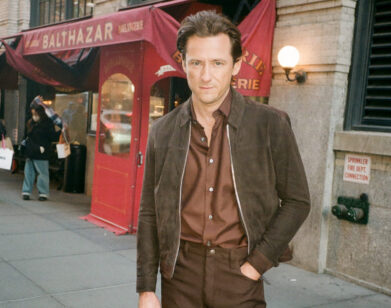Stage Notes: What a Celebrity Opera Says About Us

PHOTO BY KEN HOWARD/COURTESY THE METROPOLITAN OPERA NEW YORK.
Booing’s not untraditional to opera the way you’d think it’d be, although it seemed to surprise the staff of the Metropolitan when they heard some on the opening night of Attila. Booing’s considered incredibly gauche in an American context, where, no matter how politely you want to put it, opera is considered the stodgiest artform (and for that reason, worthy of landmark overprotection) and booing is the domain of the Boston Red Sox, which, also traditional, has cultivated enough of a following to guarantee its survival into the near future. Booing is not such a taboo in Europe, where opera is more integrated into the cultural fabric as an innovative form.
Apples and oranges? Maybe, and thankfully. But professional baseball has some lessons for the Metropolitan, which in 2006 announced a new general manager in Peter Gelb, who has been profiled infinitely in the media for his initatives to ramp up the productions at Lincoln Center and bringreproductions of the stage productions to select movie theaters nationwide. The productions have cost more, and apparently (thought not definitely) had an impact on ticket sales and paid attendance. Last week the opera received a $30 million donation, which is promising although Gelb warns, “It’s not enough to save us.” He’s been helped in his makeover by a new plaza at Lincoln Center which feels substantially less like a memorial (although not entirely unlike one).
Saturday night was the last showing of Attila, which was this year’s marquee production because it’s by the beloved Verdi, because it included Pierre Audi as director and an establish cast; but rally because the sets were done by celebrity architects Herzog and de Meuron and the costumes by celebrity designer Miuccia Prada. It would, however, be error to call this an all-out crossover: Attila is Verdi’s ninth opera, an early one, and not one of his favorites. There are strong, eminently followable actors, and lyrical arias. But the core themes of nationalism and steadfastness are not always entirely accessible, even if they are channeled through an insecure king and his sexy betrayal.
But the opera’s efforts at outreach was palpable over the weekend. For one, people who are not opera afficionados knew that the opera was happening. And on Saturday night, this reporter—who is used to running into familiar mature faces and family at the opera, encountered five friends unrelated to the production who were under the age of 30. And this was on the final night of the production—not a fashionable, photographed opening. They’d all come to see the sets and architecture.
The season’s other crossover production was the William Kentridge-directed and designed staging of Shostakovich’s The Nose. So it seems like art is the opera’s entrypoint to the mainstream. That opera, Attila, treated the set like a scrim, a flat plane to be crowded with lots of information and occasionally interfered with by characters. The difference is that Herzog and de Meuron understood that the enduring effect of the Metropolitan’s architectural casing—its first-class real estate and its elephant skeleton—is grandeur. It’s a theaters where metaphors are reduced to grand pronouncements, and where you better be in a box seat or the front orchestra to experience the intensity of the artform.
The curtain raised on Act I to reveal a massive vertical plane of ruins in heavy bit elegant striations. Ruins are often described as the strongest entrypoint for allegory, which came to fruition as the entire pile of rubble was mysteriously elevated to half-mast, under which a band of shlumpy pesants stood before sublime spotlights. Act II was set before a huge and unflinching pnaorama of plants, which, during the storm sequence, were lighted with such texture that they seemingly animated into 3-D. If the director was looking to make money with this one, they’d at least bothered to watch Avatar.
The lesson of blockbuster allegorical features looms large. If you’ve got it, don’t flaunt it—just make the most of it; don’t be embarrassed that someone cares enough to give you the money to produce your artwork big-time. The awkward moments in the set came when the monumental set—which in its wholeness and fortitude was like a canvas by Anselm Kiefer—was cut into small nooks to reveal a sky made of a flimsy tarp.
Similarly, Prada’s costumes could have used uniformity of statement. Not to insist upon formality, but the peasants’ T-shirts do nothing when lit behind to play up their silhouettes. At least belt the sleeves! Prada was obviously brought in because of her involvement in art, and because her interest in tech fibers is consistently wedded to more traditional forms. She mixed these in with “period,” earthy fabrics like feathers and leather. She also clearly realized that most people couldn’t see texture from their seats, and so there were wacky extraneous details like helmuts and collars Christmas lights on them.
Everyone poo-pooed the hairdo for Odabella, the opera’s lead soprano and the murderess of the king Attila, by comparing it to Marge Simpson’s inelegant coiffe. But the beehive has a strong shape, the beehive is an apt metaphor for her looming wrathfulness. It’s already a cliche to invoke the trendy minimalist example of Celine and Phoebe Philo, but the overwhelming lesson of Attila is the importance of strong singularity and shape; that minimalism’s emphasis on unitary forms and forward-thinking technologies.






